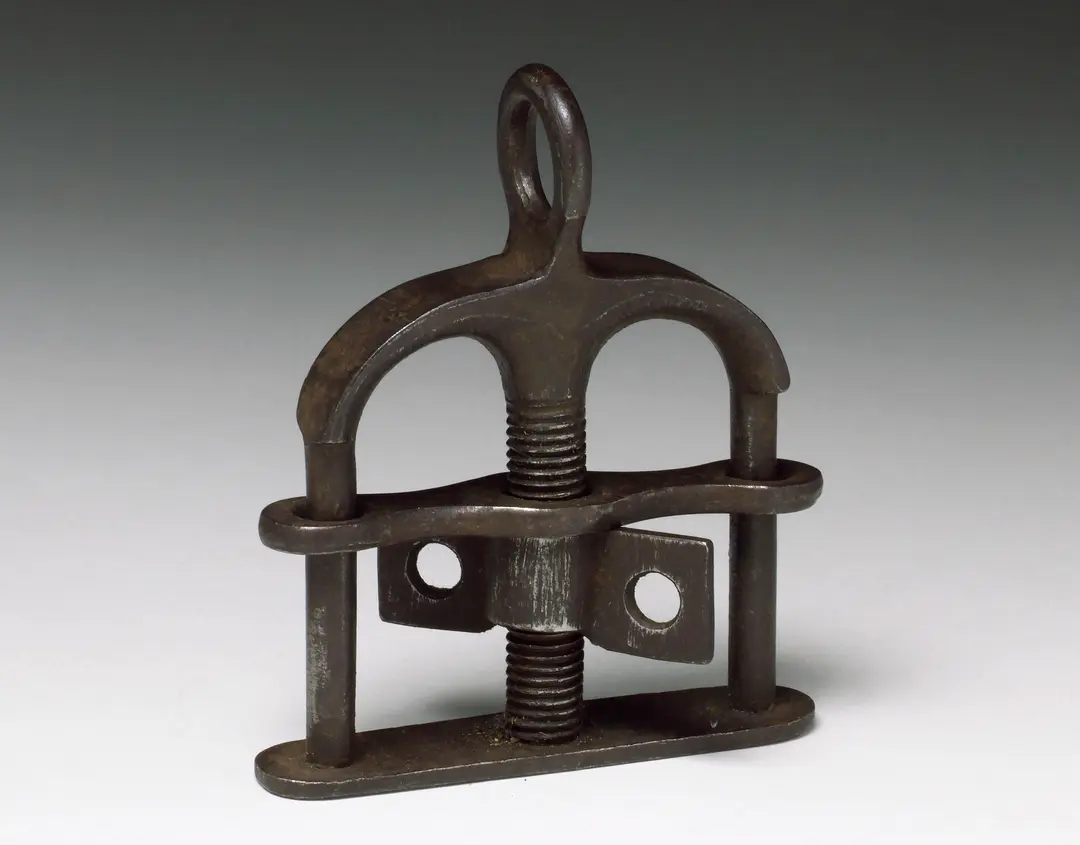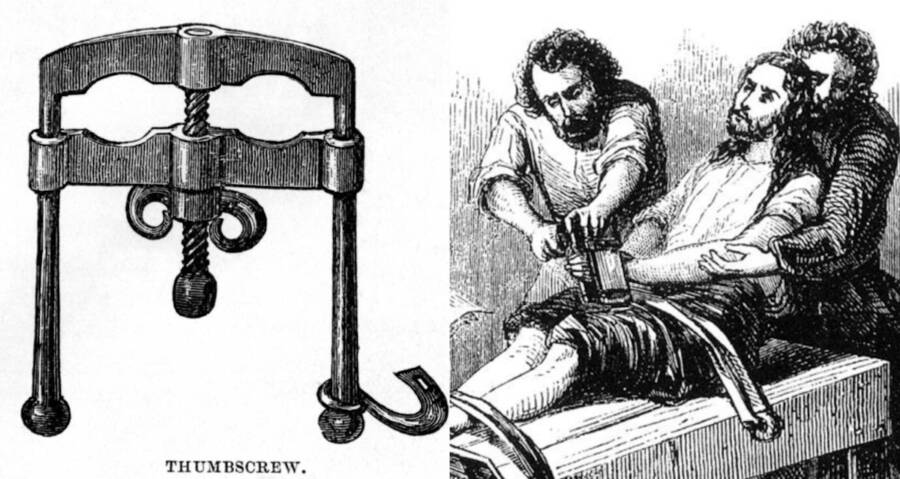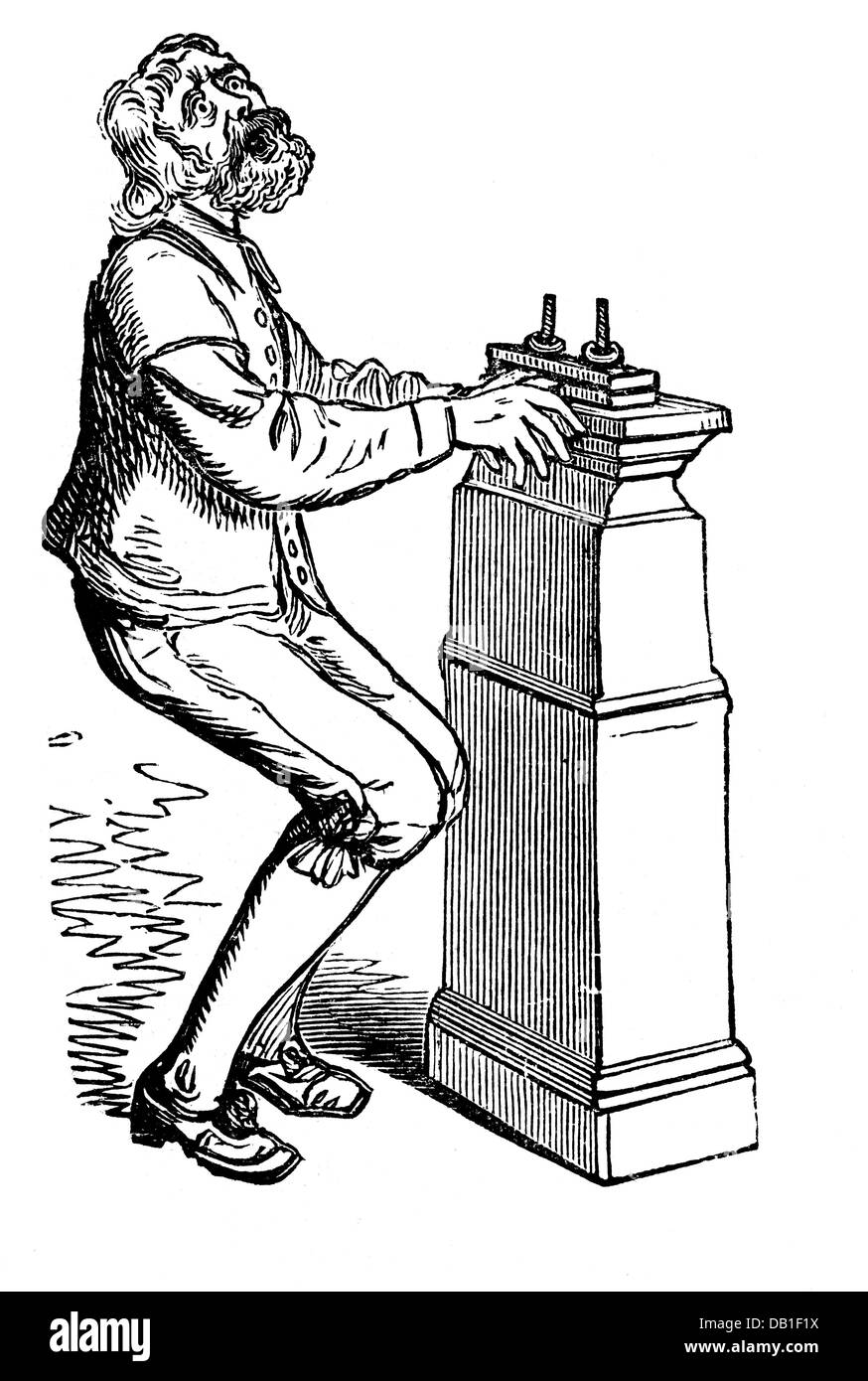During Europe’s early modern period, roughly spanning from 1450 to 1750, the thumbscrew emerged as a notorious device used to inflict severe pain. This instrument of torture was designed to crush a person’s fingers or thumbs, causing excruciating agony. Much like the infamous rack, the thumbscrew served not only as a means of punishment but also as a method to extract confessions from the accused.

The thumbscrew, also known as the “thumbikin” (with various spelling variations), was a relatively simple yet terrifying device. It typically consisted of a metal bar with holes through which the victim’s fingers or thumbs were placed. Once the digits were secured, a screw was tightened, gradually increasing the pressure until the bones and soft tissues were crushed. The pain inflicted by the thumbscrew was intense, often leading the victim to confess to crimes they may or may not have committed, simply to end the suffering.

Torturers employed the thumbscrew for its effectiveness in producing confessions. In an era where judicial procedures were harsh and often lacked fairness, such devices were a common tool in the arsenal of inquisitors and executioners. The psychological torment of anticipating the pain, combined with the actual physical agony, made the thumbscrew a feared instrument throughout Europe.

The use of the thumbscrew, alongside other torture devices, reflects the brutal methods employed in the pursuit of justice during the early modern period. While it is difficult to comprehend such cruelty today, understanding these historical practices offers insight into the evolution of legal systems and the gradual shift towards more humane methods of interrogation and punishment.

In conclusion, the thumbscrew stands as a grim reminder of the lengths to which societies have gone in the name of law and order. Its legacy underscores the importance of continual progress in human rights and the treatment of individuals within judicial systems worldwide.



